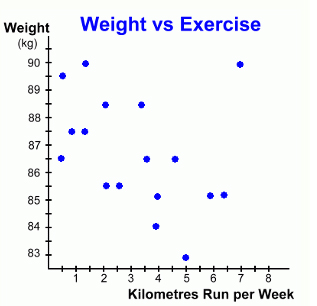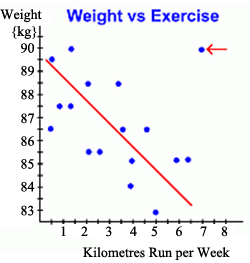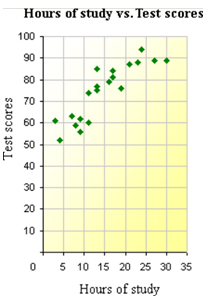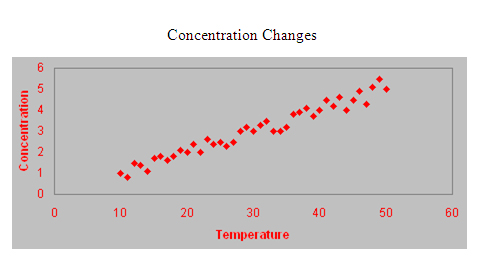
This graph illustrates how a person's weight might change depending on how much they run in a week. It records the change in weight for a group of people, all of whom started out weighing 90 kg, and each of whom runs a different number of kilometers each week, for an unspecified period.
Can you see a trend line for the data points? Yes, it naturally decreases.
Here, as the kilometers run each week increases from person to person, the weight of each person seems to decrease.
This is an example of a weak or low negative correlation. It's negative because as the number of kilometers increases, the weight decreases. It's a weak correlation because the data points line up only weakly.
Hint: Practice describing the meaning in the situation using the words increase and decrease.



